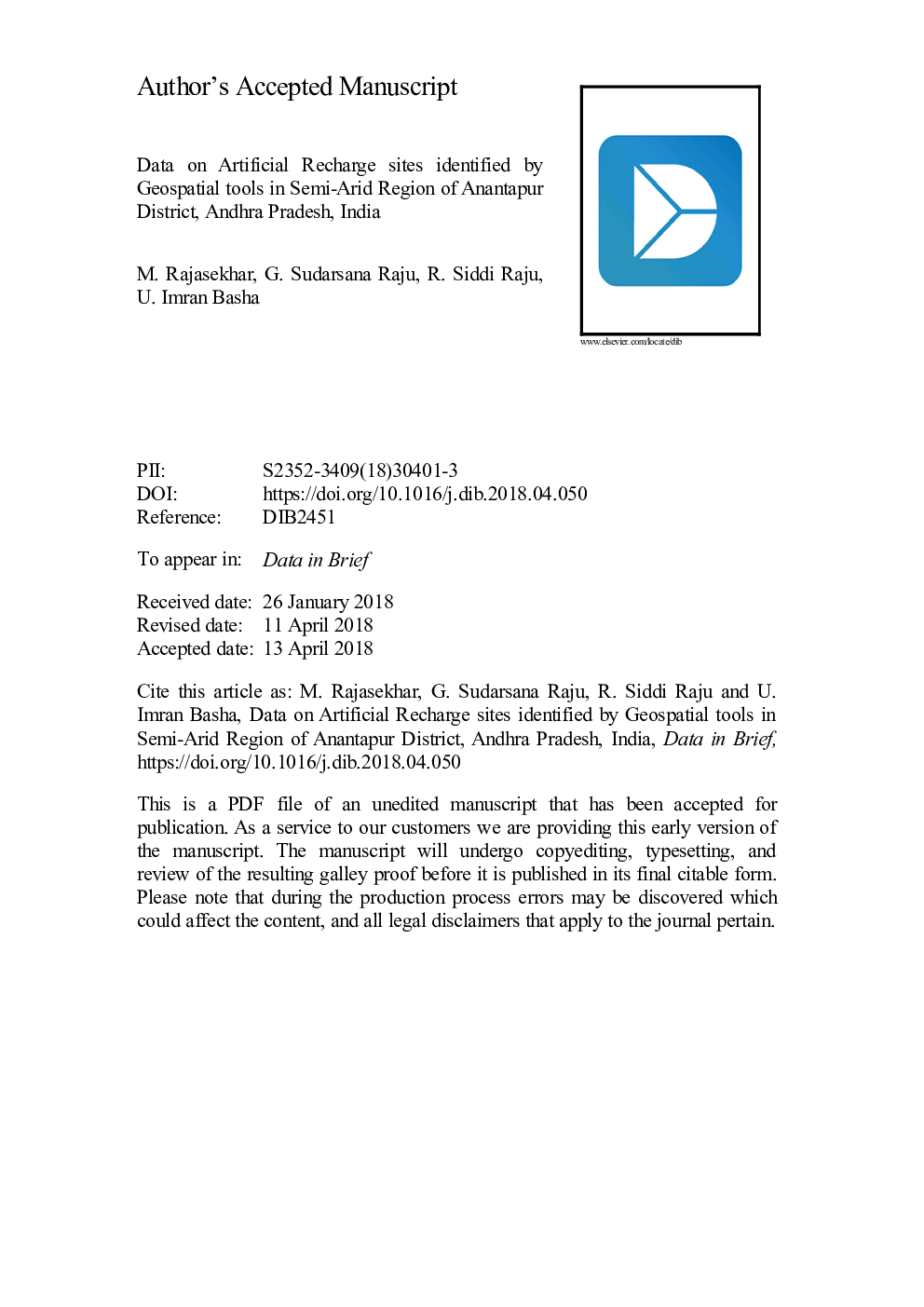| Article ID | Journal | Published Year | Pages | File Type |
|---|---|---|---|---|
| 6596795 | Data in Brief | 2018 | 20 Pages |
Abstract
The Geospatial Technologies like Remote Sensing (RS) and Geographic Information System (GIS) have been playing vital role in capable forecasting and management of imperative groundwater resources in the emerging nations. In recent times, the geospatial technologies like RS, GIS and Multi Influence Factor (MIF) methodology are helpful in identifying groundwater potential zone. For the present study, the geospatial technology is used to prepare various thematic maps such as Land Slope, Geomorphology, Geology, Soil, Drainage Density, Lineament Density, Landuse/Landcover, Hydrogeomorphology, and Annual consideration of the valuation of groundwater assets for the semi-arid region in and around Bommanahal Mandal of Anantapur District in Andhra Pradesh, Southern India. As a part of the study eight thematic layers and their functions have been designed applicable weights at the Saaty׳s scale according to their comparative connotation in groundwater occurrence. The designed weights are normalized by using AHP (Analytic Hierarchy Process) MIF techniques and eigenvector method to various thematic layers and their features. Further to create a groundwater potential map the chosen thematic maps are integrated by weighted linear grouping method in a GIS environment. Based on the groundwater potential index values, the study area is classified into four different groundwater potential zones such as 'good', 'moderate to good', 'moderate' and 'poor'. The new recharge structures have proposed to fulfill the demand of groundwater to expand the scope of groundwater for future generations. Considering the overlay analysis of geomorphology and drainage layer execution through GIS technologies, the appropriate sites for artificial recharge structures have been identified.
Related Topics
Physical Sciences and Engineering
Chemical Engineering
Chemical Engineering (General)
Authors
M. Rajasekhar, G. Sudarsana Raju, R. Siddi Raju, U. Imran Basha,
